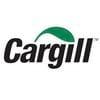Effects of Standardized Natural Citrus Extract on Growth, Gut Health, Carcass Quality, and Welfare of Broiler Chickens
1 Joint Lab ANR FeedInTech (FIT: SONAS/Nor-Feed), 49070 Beaucouzé, France; 2 Nor-Feed SAS, 3 rue Amédéo Avogadro, 49070 Beaucouzé, France; 3 Department of Animal Environment Biology, Institute of Animal Sciences, Warsaw University of Life Sciences (SGGW), Ciszewskiego 8, 02-786 Warsaw, Poland; 4 Division of Animal Nutrition, Institute of Animal Sciences, Warsaw University of Life Sciences, Ciszewskiego 8, 02-786 Warsaw, Poland; 5 Department of Animal Breeding, Institute of Biology, Warsaw University of Life Sciences, Ciszewskiego 8, 02-786 Warsaw, Poland; 6 Department of Preclinical Sciences, Division of Pharmacology and Toxicology, Institute of Veterinary Medicine, Ciszewskiego 8, 02-786 Warsaw, Poland; 7 Department of Pathology and Veterinary Diagnostics, Institute of Veterinary Medicine, Warsaw University of Life Sciences, Nowoursynowska 159C, 02-776 Warsaw, Poland; 8 Kielanowski Institute of Animal Physiology and Nutrition Polish Academy of Sciences, Instytucka 3, 05-110 Jabłonna, Poland; 9 Department of Poultry Science and Apiculture, University of Warmia and Mazury in Olsztyn, Oczapowskiego 5, 10-719 Olsztyn, Poland.
This study aimed to investigate the effects of a Standardized Natural Citrus Extract (SNCE) on broiler chickens’ growth performance, gut health, carcass quality, and welfare. A total of 756 one-day-old Ross 308 males were randomly assigned to two groups: a control group (CTL) fed with a standard diet, and a citrus group (SNCE) fed with the same standard diet supplemented with 250 g/ton of feed of SNCE. Growth performance was recorded weekly until d 35, while mortality was recorded daily. The feed conversion ratio (FCR) and European Efficiency Index (EEI) of broiler chickens were also calculated weekly. At day 35, 10 birds per group were randomly selected for slaughter performance. In parallel, broiler chickens’ welfare was assessed according to the Welfare Quality Assessment Protocol. Caecal digest was also collected post mortem for short-chain fatty acids (SCFA) analyses, and jejunum samples were collected for ex vivo gut permeability assay. SNCE dietary supplementation enhanced broiler chickens’ performance, i.e., final bodyweight and EEI, compared to the CTL group. The carcass weight was also significantly higher in the SNCE group. In addition, the fat percentage was lower in the SNCE group. Regarding broiler chickens’ welfare and gut health parameters, Footpad Dermatitis (FPD) and gate score were also lower in birds supplemented with SNCE. The SCFA measurement showed a lower concentration of iso-butyric acid, iso-valeric acid, and total putrefactive SCFA in the SNCE group. The differences in gut permeability measured as TEER value indicate that using citrus extract lowered the risk of gut inflammation. This study provides valuable insights into the mechanisms of action that may underlie the observed effects of SNCE on performance, as demonstrated in this study and others. These effects could potentially be attributed to the reduction in inflammation and the enhanced utilization of nutrients. Further studies are needed to confirm these results.
Keywords: citrus extract; growth performance; carcass quality; gut health; welfare
1. Introduction
2. Material and Methods
2.1. Ethics
2.2. Animals and Diet

2.3. Growth Parameters and Slaughter Performance Assessment
2.4. Gut Health
2.4.1. Short-Chain Fatty Acids (SCFA) Analysis
2.4.2. Jejunal Permeability and Health Status
2.4.3. Histopathological Examination
2.5. Welfare Assessment
2.5.1. Footpad Dermatitis

2.5.2. Litter Quality

2.5.3. Lameness (Gate Score)

2.5.4. Hock Burn


2.6. Statistical Analysis
3. Results
3.1. Growth Parameters and Slaughter's Performance


3.2. Gut Health



3.3. Welfare Assessment

4. Discussion
4.1. Effect of SNCE on Growth Performance of Broilers Chickens
4.2. Effect of SNCE on Slaughter Performance
4.3. Effect of SNCE on Gut Health
4.4. Effect of SNCE on Welfare
5. Conclusions
1. Kwon, B.-Y.; Lee, H.-G.; Jeon, Y.-S.; Song, J.-Y.; Kim, S.-H.; Kim, D.-W.; Kim, C.-H.; Lee, K.-W. Research Note: Welfare and Stress Responses of Broiler Chickens Raised in Conventional and Animal Welfare-Certified Broiler Farms. Poult. Sci. 2024, 103, 103402. [CrossRef]
2. Santos, M.N.; Widowski, T.M.; Kiarie, E.G.; Guerin, M.T.; Edwards, A.M.; Torrey, S. In Pursuit of a Better Broiler: Walking Ability and Incidence of Contact Dermatitis in Conventional and Slower Growing Strains of Broiler Chickens. Poult. Sci. 2022, 101, 101768. [CrossRef] [PubMed]
3. Torrey, S.; Mohammadigheisar, M.; Nascimento dos Santos, M.; Rothschild, D.; Dawson, L.C.; Liu, Z.; Kiarie, E.G.; Edwards, A.M.; Mandell, I.; Karrow, N.; et al. In Pursuit of a Better Broiler: Growth, Efficiency, and Mortality of 16 Strains of Broiler Chickens. Poult. Sci. 2021, 100, 100955. [CrossRef] [PubMed]
4. Knowles, T.G.; Kestin, S.C.; Haslam, S.M.; Brown, S.N.; Green, L.E.; Butterworth, A.; Pope, S.J.; Pfeiffer, D.; Nicol, C.J. Leg Disorders in Broiler Chickens: Prevalence, Risk Factors and Prevention. PLoS ONE 2008, 3, e1545. [CrossRef] [PubMed]
5. Zuidhof, M.J.; Schneider, B.L.; Carney, V.L.; Korver, D.R.; Robinson, F.E. Growth, Efficiency, and Yield of Commercial Broilers from 1957, 1978, and 20051. Poult. Sci. 2014, 93, 2970–2982. [CrossRef]
6. Hartcher, K.M.; Lum, H.K. Genetic Selection of Broilers and Welfare Consequences: A Review. Worlds Poult. Sci. J. 2020, 76, 154–167. [CrossRef]
7. Fleming, R.H. Nutritional Factors Affecting Poultry Bone Health: Symposium on ‘Diet and Bone Health’. Proc. Nutr. Soc. 2008, 67, 177–183. [CrossRef] [PubMed]
8. Korver, D.R. Review: Current Challenges in Poultry Nutrition, Health, and Welfare. Animal 2023, 17, 100755. [CrossRef]
9. Tallentire, C.W.; Edwards, S.A.; Van Limbergen, T.; Kyriazakis, I. The Challenge of Incorporating Animal Welfare in a Social Life Cycle Assessment Model of European Chicken Production. Int. J. Life Cycle Assess. 2019, 24, 1093–1104. [CrossRef]
10. Ducatelle, R.; Goossens, E.; Eeckhaut, V.; Van Immerseel, F. Poultry Gut Health and Beyond. Anim. Nutr. 2023, 13, 240–248. [CrossRef]
11. Amer, M.M. REVIEW: Footpad Dermatitis (FPD) in Chickens. Korean J. Food Health Converg. 2020, 6, 11–16. [CrossRef]
12. Ayalew, H.; Zhang, H.; Wang, J.; Wu, S.; Qiu, K.; Qi, G.; Tekeste, A.; Wassie, T.; Chanie, D. Potential Feed Additives as Antibiotic Alternatives in Broiler Production. Front. Vet. Sci. 2022, 9, 916473. [CrossRef]
13. Godoy, G.L.; Rodrigues, B.N.; Agilar, J.C.; Biselo, V.; Brutti, D.D.; Maysonnave, G.S.; Stefanello, C. Effects of Acacia mearnsii Tannins on Growth Performance, Footpad Dermatitis, Nutrient Digestibility, Intestinal Permeability, and Meat Quality of Broiler Chickens. Anim. Feed Sci. Technol. 2024, 308, 115875. [CrossRef]
14. Makowski, Z.; Lipi´nski, K.; Mazur-Ku´snirek, M. The Effects of Different Forms of Butyric Acid on the Performance of Turkeys, Carcass Quality, Incidence of Footpad Dermatitis and Economic Efficiency. Animals 2022, 12, 1458. [CrossRef]
15. Swiatkiewicz, S.; Arczewska-Wlosek, A.; Jozefiak, D. The Nutrition of Poultry as a Factor Affecting Litter Quality and Foot Pad Dermatitis—An Updated Review. J. Anim. Physiol. Anim. Nutr. 2017, 101, e14–e20. [CrossRef] [PubMed]
16. Yilmaz, E. Nutritional Manipulations for Preventing Contact Dermatitis in Poultry—A Review. CABI Rev. 2024, 19. [CrossRef]
17. Abbasi, H.; Seidavi, A.; Liu, W.; Asadpour, L. Investigation on the Effect of Different Levels of Dried Sweet Orange (Citrus sinensis) Pulp on Performance, Carcass Characteristics and Physiological and Biochemical Parameters in Broiler Chicken. Saudi J. Biol. Sci. 2015, 22, 139–146. [CrossRef] [PubMed]
18. Cisse, S.; Bahut, M.; Marais, C.; Zemb, O.; Chicoteau, P.; Benarbia, M.E.A.; Guilet, D. Fine Characterization and Microbiota Assessment as Keys to Understanding the Positive Effect of Standardized Natural Citrus Extract on Broiler Chickens. J. Anim. Sci. 2023, 101, skad069. [CrossRef]
19. Juin, H.; Elgaard, T.; Chicoteau, P. Effect of a Citrus Extract (NOR-SPICE AB) on Broiler Performances. Br. Poult. Sci. 2003, 44, 810–811. [CrossRef] [PubMed
20. Seidavi, A.; Zaker-Esteghamati, H.; Salem, A.Z.M. A Review on Practical Applications of Citrus sinensis By-Products and Waste in Poultry Feeding. Agrofor. Syst. 2020, 94, 1581–1589. [CrossRef]
21. Bui, H.; Cisse, S.H.; Ceccaldi, M.; Perrin, A.; Benarbia, M.E.A.; Chicoteau, P. Mitigating the Environmental Impacts from Pig and Broiler Chicken Productions: Case Study on a Citrus Extract Feed Additive. Animals 2023, 13, 3702. [CrossRef] [PubMed]
22. Michalczuk, M.; Zdanowska-S ˛asiadek, Z.; Damaziak, K.; Niemiec, J. Influence of Indoor and Outdoor Systems on Meat Quality ˙ of Slow-Growing Chickens. CyTA—J. Food 2017, 15, 15–20. [CrossRef]
23. Ruhnke, I.; Röhe, I.; Meyer, W.; Kröger, S.; Neumann, K.; Zentek, J. Method for the Preparation of Mucosal Flaps from the Jejunum of Laying Hens for Transporter Studies in Ussing Chambers. Arch. Anim. Nutr. 2013, 67, 161–168. [CrossRef] [PubMed]
24. Boumezrag, A.; Khiati, B.; Benaraba, R.; Boukraa, L.; Hammoudi, S.M.; Chicoteau, P.; Benarbia, M.E.A. Modulation of Broilers’ Productivity and Blood Biochemical Parameters by Citruselements Dietary Supplementation. Veterinaria 2018, 67, 129.
25. Cisse, S.; Burel, A.; Vandenbossche, C.; Chicoteau, P. Standardized Natural Citrus Extract Effect on Broilers Chikens; OASES: Ghent, Belgium, 2019; Volume 25, p. 176.
26. Mourão, J.L.; Pinheiro, V.M.; Prates, J.a.M.; Bessa, R.J.B.; Ferreira, L.M.A.; Fontes, C.M.G.A.; Ponte, P.I.P. Effect of Dietary Dehydrated Pasture and Citrus Pulp on the Performance and Meat Quality of Broiler Chickens. Poult. Sci. 2008, 87, 733–743. [CrossRef] [PubMed]
27. Nazok, A.; Rezaei, M.; Sayyahzadeh, H. Effect of Different Levels of Dried Citrus Pulp on Performance, Egg Quality, and Blood Parameters of Laying Hens in Early Phase of Production. Trop. Anim. Health Prod. 2010, 42, 737–742. [CrossRef]
28. Fernandes, J.I.M.; Bortoluzzi, C.; Triques, G.E.; Neto, A.F.G.; Peiter, D.C. Effect of Strain, Sex and Age on Carcass Parameters of Broilers. Acta Sci. Anim. Sci. 2013, 35, 99–105. [CrossRef]
29. Ebrahimi, A.; Qotbi, A.A.A.; Seidavi, A.; Bahar, B. The Effects of Dietary Supplementation of Citrus Sinensis Peel Extract on Production and Quality Parameters of Broiler Chicken. J. Appl. Anim. Res. 2014, 42, 445–450. [CrossRef]
30. Tumová, E.; Teimouri, A. Fat deposition in the broiler chicken: A review. Sci. Agric. Bohem. 2010, 41, 121–128.
31. Pourhossein, Z.; Qotbi, A.; Seidavi, A. Investigation on the Effects of Different Levels of Citrus Sinensis Peel Extract on Gastrointestinal Microbial Population in Commercial Broilers. Afr. J. Microbiol. Res. 2012, 6, 6370–6378. [CrossRef]
32. Cisse, S.; Benarbia, M.E.A.; Burel, A.; Friedrich, M.; Gabinaud, B.; Belz, É.; Guilet, D.; Chicoteau, P.; Zemb, O. Standardized Natural Citrus Extract Dietary Supplementation Influences Sows’ Microbiota, Welfare, and Preweaning Piglets’ Performances in Commercial Rearing Conditions. Transl. Anim. Sci. 2020, 4, 1278–1289. [CrossRef]
33. Liu, L.; Li, Q.; Yang, Y.; Guo, A. Biological Function of Short-Chain Fatty Acids and Its Regulation on Intestinal Health of Poultry. Front. Vet. Sci. 2021, 8, 736739. [CrossRef] [PubMed]
34. Gullón, B.; Gómez, B.; Martínez-Sabajanes, M.; Yáñez, R.; Parajó, J.C.; Alonso, J.L. Pectic Oligosaccharides: Manufacture and Functional Properties. Trends Food Sci. Technol. 2013, 30, 153–161. [CrossRef]
35. Hager-Theodorides, A.L.; Massouras, T.; Simitzis, P.E.; Moschou, K.; Zoidis, E.; Sfakianaki, E.; Politi, K.; Charismiadou, M.; Goliomytis, M.; Deligeorgis, S. Hesperidin and Naringin Improve Broiler Meat Fatty Acid Profile and Modulate the Expression of Genes Involved in Fatty Acid β-Oxidation and Antioxidant Defense in a Dose Dependent Manner. Foods 2021, 10, 739. [CrossRef] [PubMed]
36. Unno, T.; Hisada, T.; Takahashi, S. Hesperetin Modifies the Composition of Fecal Microbiota and Increases Cecal Levels of Short-Chain Fatty Acids in Rats. J. Agric. Food Chem. 2015, 63, 7952–7957. [CrossRef] [PubMed]
37. Cisse, S.; Laurain, J.; Garcia, J.M.; Benarbia, M. Standardized Natural Citrus Extract Stimulates the Production of Endogenous Butyric Acid in the Gut. In Proceedings of the XVI European Poultry Conference 2024 (EPC), Valencia, Spain, 24–28 June 2024; p. 274.
38. Koh, A.; De Vadder, F.; Kovatcheva-Datchary, P.; Bäckhed, F. From Dietary Fiber to Host Physiology: Short-Chain Fatty Acids as Key Bacterial Metabolites. Cell 2016, 165, 1332–1345. [CrossRef]
39. Markowiak-Kope´c, P.; Sli ´ zewska, K. The Effect of Probiotics on the Production of Short-Chain Fatty Acids by Human Intestinal ˙ Microbiome. Nutrients 2020, 12, 1107. [CrossRef]
40. Sztandarski, P.; Marchewka, J.; Konieczka, P.; Zdanowska-S ˛asiadek, Z.; Damaziak, K.; Riber, A.B.; Gunnarsson, S.; Horba ´nczuk, ˙ J.O. Gut Microbiota Activity in Chickens from Two Genetic Lines and with Outdoor-Preferring, Moderate-Preferring, and Indoor-Preferring Ranging Profiles. Poult. Sci. 2022, 101, 102039. [CrossRef] [PubMed]
41. Srinivasan, B.; Kolli, A.R.; Esch, M.B.; Abaci, H.E.; Shuler, M.L.; Hickman, J.J. TEER Measurement Techniques for in Vitro Barrier Model Systems. J. Lab. Autom. 2015, 20, 107. [CrossRef]
42. Yuan, L.; van der Mei, H.C.; Busscher, H.J.; Peterson, B.W. Two-Stage Interpretation of Changes in TEER of Intestinal Epithelial Layers Protected by Adhering Bifidobacteria During E. coli Challenges. Front. Microbiol. 2020, 11. [CrossRef] [PubMed]
43. Cardoso Dal Pont, G.; Farnell, M.; Farnell, Y.; Kogut, M.H. Dietary Factors as Triggers of Low-Grade Chronic Intestinal Inflammation in Poultry. Microorganisms 2020, 8, 139. [CrossRef] [PubMed]
44. Kogut, M.H.; Genovese, K.J.; Swaggerty, C.L.; He, H.; Broom, L. Inflammatory Phenotypes in the Intestine of Poultry: Not All Inflammation Is Created Equal. Poult. Sci. 2018, 97, 2339–2346. [CrossRef] [PubMed]
45. Parhiz, H.; Roohbakhsh, A.; Soltani, F.; Rezaee, R.; Iranshahi, M. Antioxidant and Anti-Inflammatory Properties of the Citrus Flavonoids Hesperidin and Hesperetin: An Updated Review of Their Molecular Mechanisms and Experimental Models. Phytother. Res. PTR 2015, 29, 323–331. [CrossRef]
46. Rustam, M.; Ifora, I.; Fauziah, F. Potential Anti-Inflammatory Effects of Eriocitrin: A Review. J. Drug Deliv. Ther. 2022, 12, 187–192. [CrossRef]
47. Singh, S.K.; Kaldate, R.; Bisht, A. Chapter 4.5—Citric Acid, Antioxidant Effects in Health. In Antioxidants Effects in Health; Nabavi, S.M., Silva, A.S., Eds.; Elsevier: Amsterdam, The Netherlands, 2022; pp. 309–322. ISBN 978-0-12-819096-8.
48. Ahmed, R.M. The Effect of Different Dietary and Management Interventions on Aspects of Foot Health, Gut Function and Litter Microbiome Composition in Growing Poultry. Master’s Thesis, University of Reading, Reading, UK, 2021.
49. Nagaraj, M.; Wilson, C.A.P.; Saenmahayak, B.; Hess, J.B.; Bilgili, S.F. Efficacy of a Litter Amendment to Reduce Pododermatitis in Broiler Chickens1. J. Appl. Poult. Res. 2007, 16, 255–261. [CrossRef]
50. Greene, J.A.; McCracken, R.M.; Evans, R.T. A Contact Dermatitis of Broilers -Clinical and Pathological Findings. Avian Pathol. J. WVPA 1985, 14, 23–38. [CrossRef] [PubMed]

















